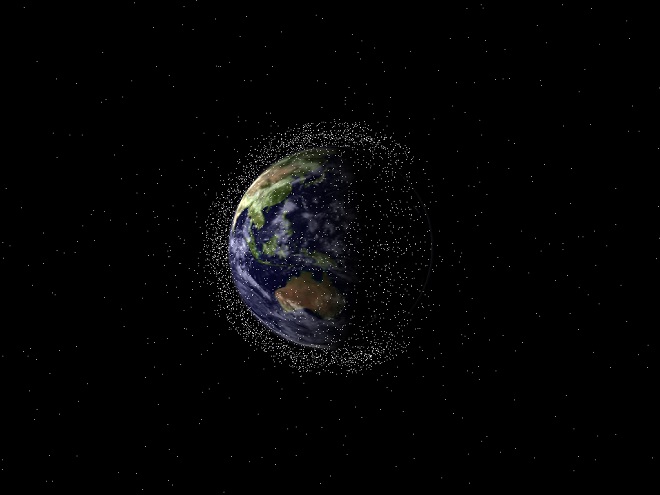07 Mar. 2014
Mount Stromlo Observatory will play a lead role in cleaning up space junk under a new $20 million Cooperative Research Centre (CRC), announced by the Australian Government’s Industry Department.
The new CRC will help scientists find and track tiny pieces of debris orbiting the Earth, which pose serious risk of collision with satellites, space stations and other space craft, similar to the events portrayed in the Oscar-winning movie Gravity.
“There are hundreds of thousands of pieces of space junk in orbit that are big enough to do serious damage to a satellite or space station,” said Professor Matthew Colless, Director of the ANU Research School of Astronomy and Astrophysics at Mount Stromlo, on the outskirts of Canberra.
“Everywhere humans have been in space, we leave some trash behind.
“We now want to clean up space to avoid the growing risks of collisions and to make sure we don’t have the kind of event portrayed in Gravity.”
Professor Colless said space junk ranged from tiny screws and bolts, to larger parts of old rockets, mostly moving in low orbits around the Earth.
He said the new CRC would use lasers to find and track the space junk so satellites and space craft could avoid a collision.
He said the ultimate goal would be to zap the debris with lasers, slowing their orbits and allowing the space junk to fall back into the atmosphere, where it would burn up harmlessly.
“Without efforts to clean up the space junk, it could eventually become impossible to send satellites into space,” he said.
The new CRC creates a high-technology consortium of aerospace industry companies, universities and space agencies, who will take the total investment in project to around $90 million.
The CRC partners are the ANU, Mount Stromlo-based EOS Space Systems, Lockheed Martin, the NASA Ames Research Centre, Japan’s National Institute of Information and Communications Technology, Optus and the RMIT University.
CRC Chief Executive Dr Ben Greene, who is also the CEO of EOS Space Systems, said scientists estimate more than 300,000 pieces of space junk were in orbit, posing serious risks to satellites and space exploration.
“There is now so much debris that it is colliding with itself, making an already big problem even bigger,” Dr Greene said. “A catastrophic avalanche of collisions that would quickly destroy all satellites is now possible.
“Our initial aim is to reduce the rate of debris proliferation due to new collisions, and then to remove debris by using ground-based lasers.”
Source:
http://news.anu.edu.au/2014/03/07/lasers-to-clean-up-space-junk/















